Conserving water is a great way to save money and do right by the environment. Take a look at our list of 45 ways to conserve water usage and become your home’s H20 efficiency master.
- Reduce the length of showers. If you carefully time your showers and cut down the amount of time you spend by even just a minute or two,
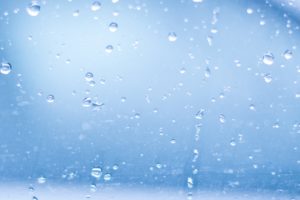 you can save a significant number of gallons.
you can save a significant number of gallons. - Turn off the water while you brush your teeth (or soap up your hands). Cutting the flow of water while you’re not actively using it may seem small, but it adds up.
- Check your kitchen, laundry room, and bathroom plumbing thoroughly for leaks (and have them fixed). You’d be surprised how much water can be lost even from the smallest of leaks. Not only will this conserve water, it’s also just good maintenance.
- Invest in aerated faucets, low-flow toilets, and high-efficiency shower heads. Efficient fixtures mean efficient water usage. A water-efficient showerhead can save you up to 750 gallons a month!¹
- Don’t run a partially full dishwasher. Always wait until the dishwasher is full to reduce the frequency of runs.
- Add a rain barrel. Rain barrels are environmentally friendly options that allow you to collect and reuse rainwater to help water gardens and outdoor plants.
- Reduce the size of your lawn and/or remove plants that need regular watering. Less lawn and/or fewer plants means less watering!
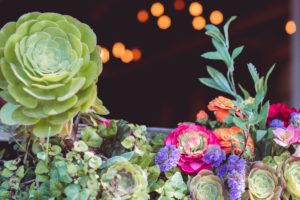
- Reuse pasta water. It might sound gross, but it’s perfectly safe; jar up your used pasta water and use it another time the next time you make pasta. So long as you store it properly, you won’t be introducing anything unsavory.
- Don’t use summer water toys (pools, squirt guns, novelty sprinklers, etc.). There are lots of other ways to have summer fun, and there are always public pools and splash pads where your kids can play.
- Use a refillable water bottle. This simple switch cuts down on the number of glasses you use, thereby reducing dishwasher time.
- Whenever possible, avoid leaving the water running. Soak your pans rather than scrubbing them with running water. Likewise, wash fruits and vegetables in a bowl of water.
- Use as little water as possible when boiling food. In general, you only need enough to cover the contents or twice as much for pasta and grains.
- Don’t toss dropped ice cubes in the sink. Use them to water a houseplant instead!
- Carefully consider appliance efficiency when purchasing a new dishwasher or washing machine. Get it right from the start and feel confident in your appliances’ water usage throughout their life.
- Upgrade old toilets with newer WaterSense models. Older models of toilets are simply not as efficient as newer options with WaterSense labeling.
- Collect the cool water that runs while you’re waiting for hot water. This cool water can be used to water houseplants, outdoor plants,
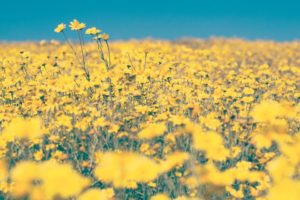 etc.
etc. - Teach your children about the importance of conserving water. It’s never too early to teach your kids to save money—and the environment.
- Keep an eye on your water bill for monitoring and self-regulation. You can’t save what you don’t know you’re losing.
- Use bath towels twice and cut down on washing machine use. It sounds weird, but, so long as your bath towels aren’t too filthy, they can often be used a second time before washing.
- Aerate your lawn to make watering more efficient. Aeration helps the water penetrate the lawn deeper into the root layer, improving water absorption and reducing the frequency of watering.
- Winterize spigots in freezing temperatures to prevent leaks that could lead to water loss. Spigots that aren’t prepared for winter weather can create ice-related cracks in the pipes. Such damage can lead to leakage the following spring.
- Use dirty fish tank water on non-edible plants. Rather than dump the water down the sink, use it to water non-edible houseplants (it’s not a good idea to eat anything you’ve used the fish tank water on, though).
- Set your water softener for the minimum number of refills. Fewer refills = less water used per month.
- Know how to use the master shut-off valve to turn off your water quickly in the event of a burst pipe. All homeowners should be
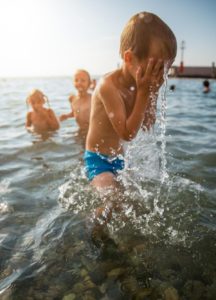 able to locate and use their shut-off valve. Being able to shut it off quickly means you’ll lose less water if there is a pipe malfunction.
able to locate and use their shut-off valve. Being able to shut it off quickly means you’ll lose less water if there is a pipe malfunction. - Consider brushing your teeth in the shower. Kill two birds with one stone and get all of your hygiene done at once!
- Look into whether you’re allowed to reuse “gray water.” In some areas, you can reuse the mostly clean water that comes from your sink plumbing, washing machine, bathtub drain, and other sources. If you can, ask a plumber to reroute your gray water for use as plant irrigation.
- Adjust your sprinklers so that they only water your lawn. Don’t waste water getting the sidewalk or street wet; make sure your sprinklers are positioned to spray only on your lawn and plants.
- Water your garden and lawn in the early morning or late evening when the temperature is cooler. The lower temperatures reduce the rate of evaporation.
- Alternatively, stop watering your lawn altogether. If it doesn’t bother you that your lawn may get yellow during dry spells, not watering is the best way to conserve water when it comes to lawns.
- Bathe young children together. If your children are young enough to bathe comfortably together, save water by bathing them in the same tub.
- Plant in the spring and fall. Watering is less necessary in these seasons, as there’s generally plenty of rain in spring, and plants prepare for winter in the fall.
- Wear clothing multiple times. Unless you sweat a lot, you can probably wear most of your clothing a few times before it needs to be washed.
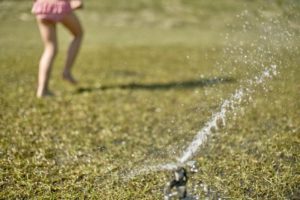 This can cut down on washing machine use.
This can cut down on washing machine use. - Use compost in your garden. The contents of compost typically hold plenty of water, which makes it great for keeping plants perky without additional watering.
- Wash pets on the lawn where it needs watering. Make sure to use lawn-safe shampoos and conditioners, if needed.
- Install drip irrigation for shrubs and trees. This places the water directly at the roots where it’s needed.
- Weed your lawn and garden on a regular basis.Weeds tend to require more water and nutrients than other plants, so removing them should reduce the amount of water needed by your lawn.
- Replace water features and fountains. Swap out water-using features with art and planters that don’t use water (or at least use less water).
- Create savings goals for the family. Get the whole family involved by setting a goal and offering a reward. Once you’ve hit your water
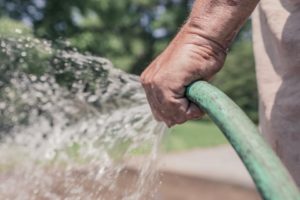 conservation goal, use some of the money you’ve saved to treat yourselves!
conservation goal, use some of the money you’ve saved to treat yourselves! - Attend a landscaping class to learn more about efficient lawn and garden care. Sometimes, you just need the help of an expert to make the most efficient plan.
- Regularly inspect sprinklers and/or irrigation systems for leaks and malfunctions. Again, keeping an eye on your equipment is both good maintenance and ideal for conservation efforts.
- Turn off “extra rinse” options on washing machines and dishwashers. One rinse should be plenty for most dishes, so long as you don’t use too much soap.
- If you live in an arid climate (like in the Southwest), embrace desert plants for landscaping. Not every yard has to be full of grass! Beautiful succulents and other climate-appropriate plants are happy in dry conditions and need no additional watering.
- Check for toilet leaks with food coloring. Put food coloring in the toilet tank and check for leakage into the bowl. If the coloring appears, have a plumber fix the leak.
- Use a hose nozzle or turn off the hose while washing a vehicle. Avoid leaving the hose running and reduce water loss.
- If you have a pool, use a pool cover to prevent evaporation. Less evaporation means you won’t have to add more water over time.
To learn more about how you can conserve water or to schedule an appointment for water leak repair, water heater maintenance, or other plumbing issues, contact one of Christianson Air Conditioning & Plumbing’s four convenient locations (Austin metro, San Antonio, Temple, and New Braunfels) today!
Source


